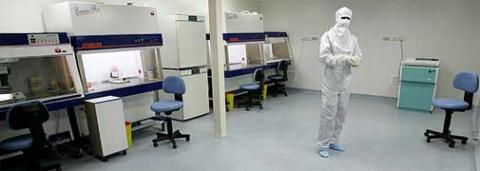
Following the large interest triggered by the first stem cell article, we are now able to provide an update from the researchers at the Royan Institute in Iran. Dr. Nasser Aghdami, the head of regenerative medicine department has been king enough to answer some of our questions.
Q1: Mr. Aghdami, what is your role at the Royan Institute and your experience in stem cell biology?
I am a specialist in immunology (MD, PhD) and working at the Royan institute as the head of regenerative medicine department and Royan Cell Therapy Center. Royan Cell Therapy Center was established in January 2009 for clinical trials in the cell and stem cell therapy field. Our site in Persian is located at www.RCTC.ir and we are going to translate it to English and Arabic soon.
Q2: What is the current stage of stem cell research at the Royan Institute?
The Royan institute has been established initially for infertile patients. We started our research in the stem cell field 5 years ago and by now we've established 5 different cell lines for embryonic stem cells with good facilities for stem cell differentiation. In 2008, iPS technology (induced pluripotent stem cells) has been set up in the stem cell department of the Royan institute.
Paralel to the research, the facilities for cell therapy developed. However there are restrictions and regulations regarding the use of stem cell in clinical studies. We can just use the adult stem cells in clinical studies and we do not have any study which used embryonic stem cells.
In patients with localized vitiligo, we separate melanocites from the patients own skin biopsies and then inject them to the hypo-pigmented area. For patients with generalized vitiligo, we need to culture the melanocites which are ready to use in clinical trial.
Q3: When could we expect a vitiligo stem cell treatment/procedure widely available for patients and how much would it cost?
Actually for patients with localized vitiligo the treatment is already available as a clinical service; however there are some inclusion criteria we use for better response:
Inclusion Criteria:
Age over 12 years
Stable form of vitiligo (no increase in the size of the lesion for at least one year)
No use of immunosuppressive & cytotoxic drugs at least for past 6 months
Exclusion Criteria:
Pregnant patients
Patients with active disease
Infection at the recipient site
Evidence of köebner in the past
Keloidal tendencies
After inclusion, a skin biopsy will be taken from buttocks area, and the melanocytes will be separated with enzymatic treatment. A day after the biopsy is taken, cells are ready to be injected in the hypo-pigmented area. Patients will follow up 2 weeks after the injection and every 3 months for progress checks. Our results show that the repigmentation starts after 3 to 4 months and is completed after 8 to 12 months in the injected area. We see outstanding results in 50 to 60 percent of cases.
The cost depends on the lesion size and variable between 2000$ to 3000$.
Q4: Considering Iran's openness to stem cell research do you think western patients could travel to Iran to undergo such a procedure?
Our services are available for all patients alike. For western patients, out center can assist with the Iranian formalities (visa, accomodation)
Q5: From the patient's point of view, what happens during a stem cell treatment procedure? (Duration, post operative recovery, precautions, numbers of interventions necessary)
The procedures are:
1- Visiting patients for inclusion and exclusion criteria
2- Arrange appointment for biopsy
3- Take a skin biopsy (1 to 2 cm)
4- Enzymatic treatment for melanocytes separation
5- Quality control
6- Preparing the cell for injection
7- Injection the cells in lesion
8- Visited patients after 2 weeks for any side effects
9- Regular visiting per 3 months for repigmentation
Notes. There is no post operative recovery period. The inclusion/exclusion criteria are very important for best results. For each patient just 2 interventions are necessary: a biopsy and a skin injection